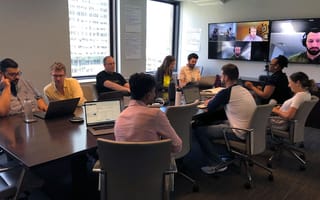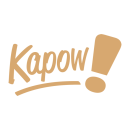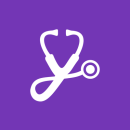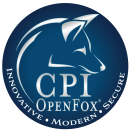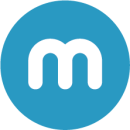There’s no better feeling than taking pride in a difficult project you’ve toiled away at.
This sentiment is especially true for engineers, who often take on complex and challenging ideas that can result in tangible technology used by their company or their users. Developers at five Chicago companies shared what they’ve been working on lately, as well as which projects have left them feeling fulfilled.

Kapow, acquired by Cvent in June 2018, helps companies book cool corporate functions in cities all over the country. Andrew Finch said he was tasked with migrating the company’s data, a “huge, new challenge” for the senior software engineer.
What are you working on at the moment, and what do you enjoy most about this project?
We are currently looking to address some of our scalability issues by rebuilding our infrastructure around a microservices architecture approach. This is leading to opportunities to explore tools like AWS lambda, which recently released its ruby SDK, and GraphQL to provide more reliability and maintainability throughout our platform. I enjoy the fact that Cvent and Kapow are completely open to innovation and change — provided you can prove your concept works and provides business and technological value. As such, no idea is a bad idea, and working at Cvent and Kapow will always provide me with the challenges and opportunities that make software engineering an exciting field to be in.
Working at Cvent and Kapow will always provide me with the challenges and opportunities that make software engineering an exciting field.”
What’s a project you worked on that you’re really proud of, and what role did you play in it?
My first project that I led with Kapow was the migration of all of our vendors from Salesforce to our own internal applications, which came alongside a near rebuild of our internal applications for supply. We had to identify gaps between our products and what we used Salesforce for quickly, and then design and implement new features in our applications to perform similar functionality or replace it entirely.
Leading the effort to perform the data translation, verification, and migration effort was a new challenge for me that I embraced and managed to pull off without any major hiccups. The day we flipped the switch from Salesforce to our own applications was a historic moment for our technology and product departments.

CityBase provides governments and utilities agencies with payment solutions and other digital services. These offerings may deal with sensitive information and can require a certain level of user security, and Senior Software Engineer Hilary Lee said her team is working to improve the platform’s authentication capabilities.
What are you working on at the moment, and what do you enjoy most about this project?
We built a new validation process for things like ensuring a person’s email or phone number was a valid format before they could submit a form or payment. We wanted it to integrate cleanly with our current tech stack, which includes Redux, RxJS, Sanctuary and Ramda.
Another senior engineer, Liam, and I created the first version, which was able to apply validation functions to user input in a really cool way — all with functional programming techniques. Liam and another senior engineer, Beth, are now working on an open source version and I’m excited to see our work released to the open source community. In the process of working on this project, I had to do a deep dive into functional programming concepts and I learned a lot that has changed how I approach problems in my day-to-day job.
I had to do a deep dive into functional programming concepts and I learned a lot that has changed how I approach problems in my day-to-day job.”
What’s a project you worked on that you’re really proud of, and what role did you play in it?
We’ve been creating a user profile so that our clients’ customers can store things like upcoming bills or preferred payment methods. As part of this, I’ve been tackling questions about how to build reusable components that can adapt to a variety of content and layout constraints described in JSON. It’s tricky to think about building in a way that is sustainable and adaptable for the long haul and I’ve been enjoying the challenge of solving this problem.

While HealthJoy’s mobile healthcare management platform employs data to help users take advantage of their benefits, Director of Technical Product Alex Viana said the company is incorporating data into more of its internal processes. His team is tasked with building the infrastructure to support that effort.
What are you working on at the moment, and what do you enjoy most about this project?
Right now, I am leading an interdisciplinary team to deploy a new cloud-based data warehouse. These changes will help us improve our business analytics and allow us to develop a data-driven product strategy. HealthJoy is quickly growing and we serve more members every day. We have an increasing need to integrate data within all our decisions and my team is excited to empower a more data-driven culture throughout the company.
We have an increasing need to integrate data within all our decisions and my team is excited to empower a more data-driven culture throughout the company.”
What’s a project you worked on that you’re really proud of, and what role did you play in it?
In my first month at HealthJoy, I ran the first analysis of our prescription savings program. I was asked to take a deep dive into our customers’ data and discover ways we can improve our Rx Savings service. I generated dozens of metrics by writing new ETL and analytics code in Python, Pandas and Seaborn. It was a great first project because it required me to quickly gain a deep understanding of our data systems and product capabilities. I also enjoyed that I got to interface with a wide range of departments. At the end of the project, I had powerful new insights, which continue to drive improvements in everything from member savings to optimizing our data architecture.

CPI, the OpenFox Company knows the importance of information, as it develops software that allows law enforcement entities to share data quickly and do their jobs more efficiently. Senior Software Engineer Tyler Cap said he was happy to have worked on a project that allowed certain users to get increased functionality out of the platform and let them get back to assisting the public.
What are you working on at the moment, and what do you enjoy most about this project?
I am currently working on the new Angular IRap product. I’ve never worked with Angular before, and I haven’t done much web development in general, so it has been exciting to learn this new technology. It is always nice doing group development as well.
I’ve never worked with Angular before...so it has been exciting to learn this new technology.”
What’s a project you worked on that you’re really proud of, and what role did you play in it?
I was the lead developer on the Desktop 4.0 project. The project was an enhancement to our Desktop product that focused on a new process to launch the application and remove the requirement for users to have Java installed on their machines. I’m really proud of this product and the way the project went. Some of our clients have had Java compatibility issues with their environments and this product should eliminate that.

Software Architect Andrew Boudreau works at Milyli, which builds custom software for companies in the legal industry. After seeing an opportunity to streamline a cumbersome task for his team, Boudreau was granted the opportunity to lead a major project.
What are you working on at the moment, and what do you enjoy most about this project?
I work on our flagship product Blackout. When you develop eDiscovery software, you need to be certain the end-user can comply with all the necessary legal conditions – like those for information governance and privacy rights. It can be tough if you don’t understand all the processes, nuances and legalese that inform the acceptance criteria of the software.
We recently implemented a new system design that simplifies Blackout’s administrator setup, scales the application for larger document volumes and allows the Milyli team to ship new features quicker. As you can imagine, it required a lot of planning, coding and testing.
I’m proud I helped my team and work in a place where I had a path available to bring an idea to life.”
What’s a project you worked on that you’re really proud of, and what role did you play in it?
A while ago, I saw that our team was losing hours on our back-end managing product licenses and tracking down usage metrics. It was driving me nuts to not fix the process, so I presented a new, more productive tool concept to our management team. They loved the ROI calculations I included, so I was given the time and resources to build it.
My team used cloud technologies hosted on Microsoft Azure to build the tool and we had deployed in just a few weeks. We didn’t name it – sorry, marketers – but based on our internal reports, we’ve shaved days off our monthly operation hours total. Saving the company money like that definitely makes me feel I’ve demonstrated my value as an employee, but more than anything, I’m proud I helped my team and that I get to work in a place where I had a path available to bring an idea to life.

